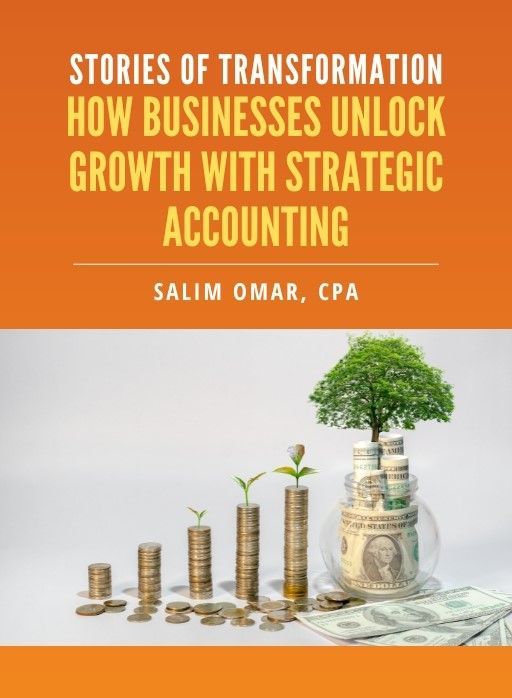How to Organize Your Receipts for Maximum Deductible Impact
If you’re like most business owners, you probably underestimate how much messy receipts really cost you. Lost or half-saved ones don’t just clutter your books — they quietly kill deductions, stall audits, and crank up your stress levels when tax time hits. And honestly, nobody enjoys digging through old drawers, shoeboxes, or email attachments trying to prove what they bought months ago.
The good news? When you get your receipts under control, everything else falls into place. You’ll see where your money’s going, keep deductions airtight, and breeze through year-end without panic. At Straight Talk CPAs, we establish straightforward, no-nonsense systems that help clients stay compliant and retain more of their earnings.
Why Organized Receipts Matter
Receipts aren’t just pieces of paper. They’re proof. They tell the story of your spending — and when the IRS or CRA asks for it, you’d better have the right story to tell.
When receipts go missing, here’s what usually happens:
- You lose deductions you’re actually entitled to.
- You waste hours hunting through files when auditors ask questions.
- You end up with duplicate or mis-keyed entries that make your books unreliable.
Think of receipts like threads in a net. One or two missing might not seem like much, but lose too many, and the whole thing tears. Keeping them organized means your financial picture stays solid — and defensible if someone decides to take a closer look.
Step 1: Choose a System That Works for You
Before anything else, pick a system that fits your habits — not one that looks fancy in a blog post.
- Physical filing: Old-school still works. Sort by type — travel, meals, supplies, equipment — and stash by month or quarter. Label everything clearly.
- Digital scanning: Snap and store. Use your phone or an app to upload receipts straight to the cloud. Searchable, backed up, no paper cuts.
- Hybrid setup: Keep originals for big purchases, scan the rest.
Here’s the thing — the best system is the one you’ll actually use. Overcomplicating it guarantees failure. Consistency wins every single time.
Step 2: Categorize As You Go
Categories aren’t just bookkeeping fluff; they’re how you defend every dollar.
Group expenses into clear buckets — meals, travel, software, supplies, client entertainment, utilities. Then stay consistent. Using the same structure every year makes it easier to spot trends and explain changes if you’re ever audited.
And always tag the purpose: client-related, internal, or capital investment. That one note can save you later when you’re figuring out what’s fully deductible and what’s not.
If you get into the habit of categorizing receipts weekly, you’ll never face the end-of-year scramble again.
Step 3: Watch the Timing
Timing trips up more businesses than bad math.
Make it a habit to log receipts immediately. Five minutes a day beats a two-hour cleanup session later.
Every week, match what you logged with your bank and card statements. Did something slip through? Fix it while it’s fresh.
At month-end, total everything by category and flag anything unusual. The pattern matters — it’s what helps your CPA spot new deduction opportunities or timing errors.
Don’t let receipts pile up “for later.” Later never comes.
Step 4: Let Tech Do the Heavy Lifting
Good news — the tools are better than ever.
Apps like Expensify, Hubdoc, and QuickBooks let you scan, tag, and attach receipts automatically. Set up rules for recurring costs so the software matches them to your statements without lifting a finger.
And please, use cloud storage. It’s 2025 — coffee spills and missing folders shouldn’t be a business risk.
Just remember, tech helps you stay organized, but it’s not a substitute for discipline. You still need to review, verify, and understand your own numbers.
Step 5: Audit Yourself Before Someone Else Does
Every few weeks, do a mini-checkup. Doesn’t need to be formal — just make sure receipts are complete, readable, and sitting in the right place.
If you spot gaps, rebuild them using bank statements or vendor invoices. Pay attention to big-ticket items — auditors will.
Small, regular reviews are how you stay clean all year. It’s cheaper, faster, and a lot less stressful than fixing it all in April.
A Real Example: From Chaos to Clarity
We had a small consulting firm come to us mid-December with receipts everywhere — paper piles, screenshots, random PDFs. They thought they were fine until we ran a quick check. Turns out they’d been missing nearly $8,000 in deductible expenses.
We built them a quick system: daily scans, consistent categories, and 15-minute weekly reviews. By tax season, they were audit-ready, organized, and more profitable.
Lesson learned? Organized receipts don’t just keep the IRS happy — they keep your money where it belongs.
Final Thoughts
Getting your receipts under control doesn’t have to be complicated. Build a simple system, make it part of your routine, and use the right tools to stay on top of it. The payoff? More deductions, cleaner books, and far fewer headaches.
At Straight Talk CPAs, we help business owners like you set up practical systems that hold up under scrutiny and actually make sense in real life.
👉 Don’t let disorganization cost you money. Start small, stay consistent, and protect every deduction you’ve earned.
Free eBook:
Stories of Transformation


Salim is a straight-talking CPA with 30+ years of entrepreneurial and accounting experience. His professional background includes experience as a former Chief Financial Officer and, for the last twenty-five years, as a serial 7-Figure entrepreneur.





